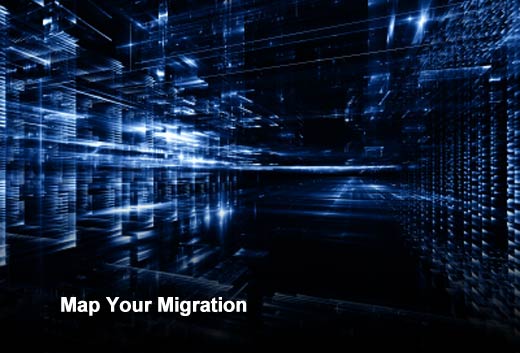As with any technology, cloud development and cloud resources are continually evolving, scaling and reaching for the next level of usability. We’ve moved to a stage where hybrid cloud – the use of a combination of public and private cloud and private on-premise functionality – is a popular choice to provide the resources necessary to support today’s business needs. To take this idea to the next level, Cisco announced in March its commitment to investing one billion dollars over the next two years to create a global Intercloud – a network of clouds – that could be leveraged to help partners and service providers bring new services to market more quickly.
While the full picture of how the Intercloud will be used is still developing, experts anticipate initial migrations to the Intercloud will focus on two key areas: disaster recovery/business continuity (DR/BC) and the need for on-demand “elastic” compute capacity. According to Wikipedia, the Intercloud is based on the idea that each single cloud does not have infinite physical resources or ubiquitous geographic footprint, so both of these use cases fit nicely into the basic premise of the Intercloud.
Converged Technology Group, a managed services partner, has identified five critical steps CIOs and IT pros can take to further develop their cloud strategy and prepare their organizations for the coming Intercloud.
“Cisco’s Intercloud holds great promise, particularly when it comes to reducing customers’ IT costs and mitigating risk, but it’s important to prepare today for the architectures and options that will exist tomorrow,” says Leo E. Galletta, president and CEO, Converged Technology Group. “A solution provider experienced in developing cloud strategies can walk corporate CIOs through the phases of integrating their existing technology infrastructure with the global Intercloud. This starts by defining their cloud strategy, helping them select a private cloud architecture that will support their use of the Intercloud, examining which aspects of the Intercloud will be most effective for their particular business, mapping their migration path over the next one to three years, and finally helping the CIO determine how they’ll manage their hybrid cloud operations.”
Preparing for the Next Wave of Cloud Technology
Click through for five steps CIOs and IT pros can take to prepare their organizations for tomorrow’s cloud infrastructure, as identified by Converged Technology Group.
Define the Strategy
Private, public or hybrid? The days of aligning with a singular cloud strategy are gone. As businesses mature in their use of technology – and the cloud in particular – most will adopt a hybrid cloud strategy. To prepare, it’s critical to clearly define the kinds of workloads your company is willing to move into the cloud, and to plan IT strategies and technology purchases accordingly.
Choose the Architecture
Not all companies have a virtual infrastructure solidly in place, so the next step is to make decisions about the networking, compute, storage and hypervisor technologies you’ll use to get there. You need a private cloud architecture that will support your extension into the global Intercloud when the time comes, and for IT pros wrestling with the myriad of options, a solution provider or trusted IT consultant with considerable cloud experience may prove to be an invaluable resource.
Examine the Economics
There are important features of a global Intercloud – things like bidirectional workload migrations – that could prove to be hugely cost effective. Yet, it’s important to proceed with caution; while taking advantage of the global Intercloud sounds great, is it more cost-effective in your unique business situation than, for example, building out disaster recovery capabilities with a co-location provider? Cost reduction and risk mitigation will be the deciding factors in terms of how and when tapping the Intercloud makes both business and financial sense.
Map Your Migration
Whatever technology you’re running your mission-critical workloads on today will be your legacy equipment in 12 to 36 months. Developing a phased migration strategy now that takes into account how your organization can best use a hybrid cloud tomorrow will allow you to maximize the benefits of on-demand capacity, DR/BC, and delivering a single point of management for both physical and virtual workloads.
Support It Operationally
The daily operation of this kind of complex hybrid cloud solution requires a host of management tools and trained personnel who can keep business-critical systems operating optimally and securely. When developing a hybrid cloud strategy – whether or not that includes the Intercloud – examine the kinds of managed services offerings that can reduce the burden on internal IT staff.








